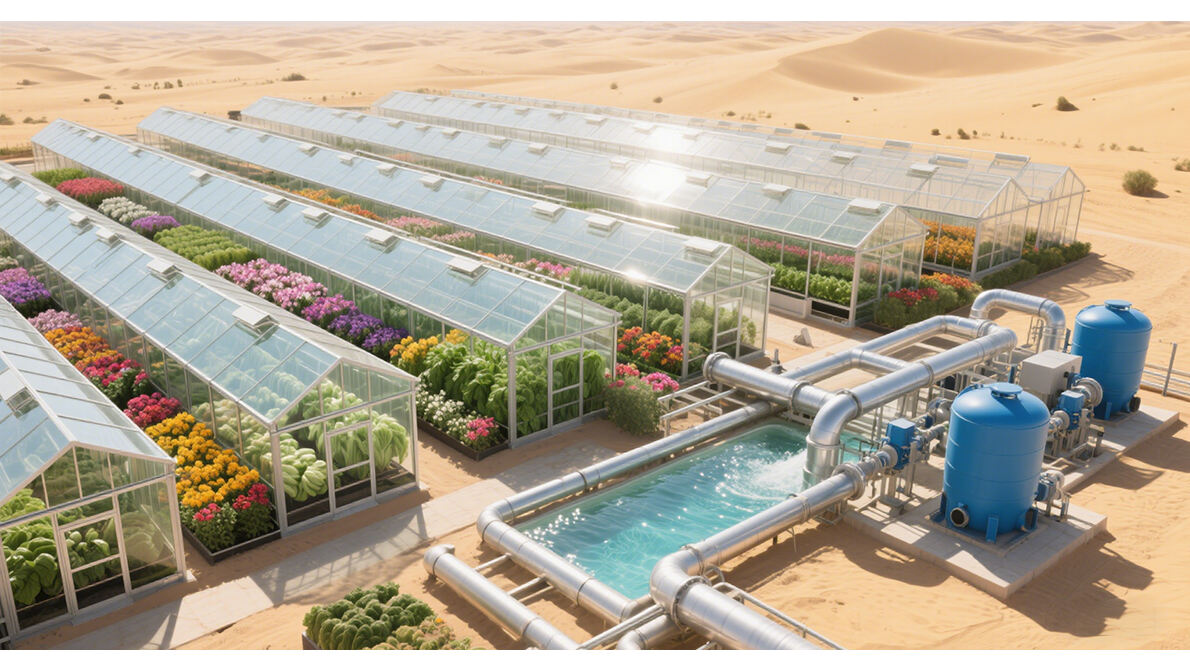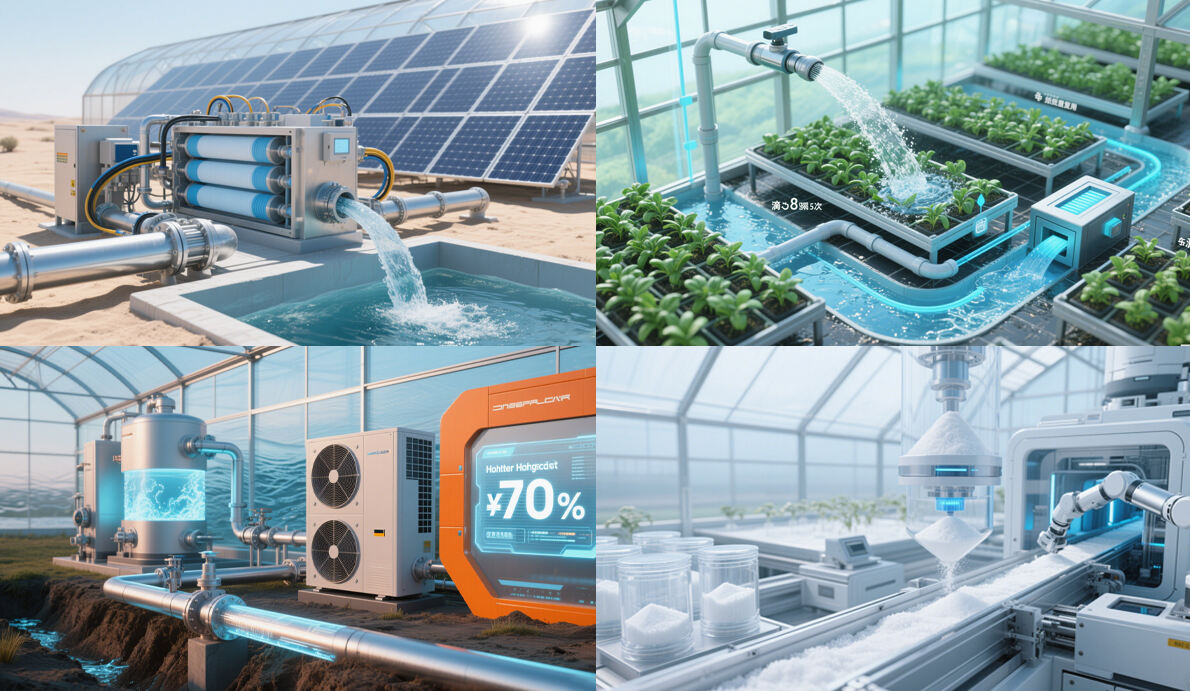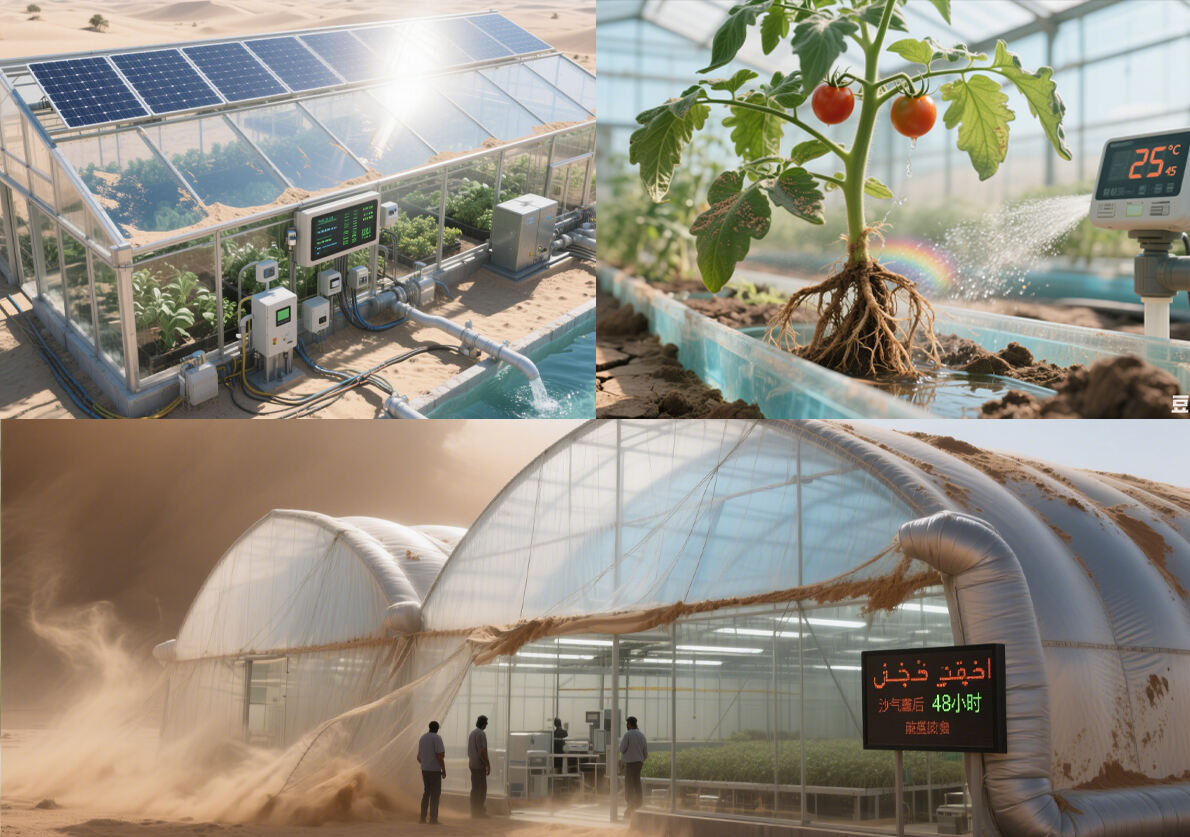Jiaohe Town Industrial Development Zone, Botou City, Cangzhou City, Hebei Province +86 13810840163 [email protected]
In the desert of Jeddah, Saudi Arabia, a fully enclosed multi-span greenhouse is producing tomatoes at a daily output of 3 tons - there is no groundwater irrigation here, no temperature-controlled air conditioning, and the only water source is seawater.
The "greenhouse + seawater desalination" integrated system developed in China is proving through technological innovation that the ultimate ceiling of agriculture is not climate and resources, but imagination.

How to grow vegetables with seawater?
Seawater desalination: Utilizing solar energy to drive reverse osmosis membranes, salt water is purified into fresh water that can be directly irrigated, with a salt concentration of less than 500ppm.
Closed-loop water circulation: The irrigation wastewater is sterilized by ultraviolet light and then recycled back to the cultivation rack. Each drop of water is reused more than five times.
Waste heat power generation: The waste heat generated from seawater desalination drives ground source heat pumps, reducing winter heating costs by 70%.
Salt resource utilization: Concentrate brine to extract potassium fertilizer and feed it back to the soil, achieving "full utilization of salt".

Sandstorm resistance design: Double-layer inflatable membrane covered with windproof net, production resumes 48 hours after sand and dust invasion.
High-temperature resistant cultivation: With a constant temperature of 25℃ in the greenhouse, the tomato roots can still efficiently absorb nutrients in a surface environment of 45℃.
Off-grid operation capacity: The Saudi project is entirely powered by solar energy. During storms, the energy storage system can operate for 72 hours.

From "burning money to grow vegetables" to "making money by growing vegetables", modular greenhouses are turning deserts into fruit and vegetable bases
Copyright © 2025 by Hebei Fengzhiyuan Greenhouse Equipment Manufacturing Co., Ltd Privacy Policy